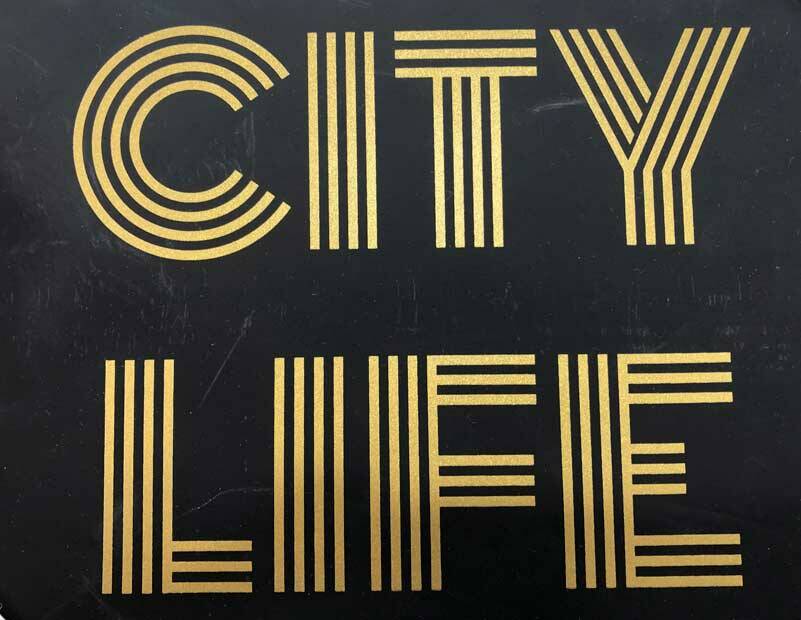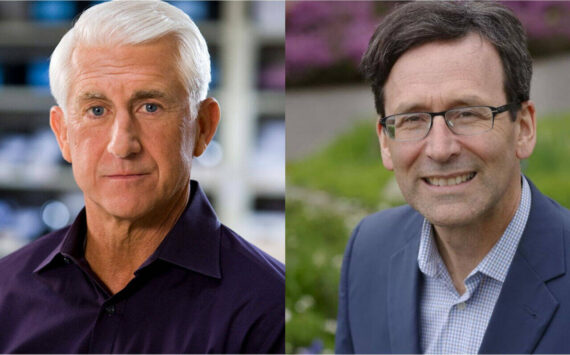By Morf Morford, Tacoma Daily Index
If you’ve been to downtown Seattle lately, you can’t help noticing the problem (literally) choking the flow of movement – and of course commerce through-out Seattle’s urban core.
And, no, I’m not referring to the tarps and ragged tents of the homeless that seem like a near constant backdrop on every photo-op in the city.
I mean the endless clog of traffic everywhere – on and off the freeway.
Seattle is, of course, not alone in having vehicles of personal mobility clogging (if not endangering) every inch of public and commercial space.
The constant thought, visible on almost every face in or out of every vehicle seems to be a universal “There has got to be a better way!”
Cities, large and small, domestic and global, have tried different urban design recipes to address the preponderance of vehicles as a first, and often enduring, impression of the cost of doing business – or even surviving in a modern city.
Seattle is, as mentioned above, not alone, and as much as busy, if not clogged urban center streets have always been part of the landscape of virtually every major metropolis, to be on the verge of a near total paralysis is in no city’s best interest.
Parking and traffic – the two-headed demon of every city
Getting to one’s destination is difficult enough.
Finding affordable and secure parking in a city center approaches the impossible.
Getting out of the parking place, and reentering the non-stop erratic, (attempted) flow of traffic is just another set of stress factors that sap energy and certainly obscure any attempt at leisure or entertainment that a city the size of Seattle has to offer.
And it does offer many world class opportunities. But getting to them can be a problem.
Getting temporary unessential traffic off the surface streets is a challenge – and as with every challenge, various city’s meet that particular challenge in different ways.
As I’ve mentioned before, with most problems in many distinct settings, there are few “best practices”.
What works in some settings may not work in another.
We have adopted plans and formulas that have worked in some cities and, after investing years and too many dollars, have found that those plans, however promising, don’t fit us. Or at least they don’t fit now.
From car-free zones to bicycle paths to mass transit to urban river walks, you can see them all in various corners and communities in the Puget Sound region, but do people use them? Do they do something like pay for themselves? Not just financially, but in quality of life, reputation and local use and appreciation?
Various cities, from London to Vancouver, Canada have car-free days or even neighborhoods.
Light rail returns
The South Sound has an abundance of light rail projects currently under construction or in the planning stages.
And Tacoma, like many cities around the world, had a flourishing street car system, that, by all accounts, was immensely popular and operated from 1888-1938. You can see an exploration of the celebration of its demise here: historylink.org/File/20712.
So has something once popular become popular again? And, as always, the one question is, how do we pay for it? Who should pay for it?
One obvious answer is that users should pay for it.
Another approach is that all who benefit from it should, at minimum contribute to the construction and maintenance of such a system.
Who wouldn’t welcome and appreciate safer, more accessible and quieter streets?
Virtually every city, resident and certainly urban planner acknowledges that something has to be done.
It helps to be small
One entire nation has attempted to bribe people out of their cars.
Since 2020, residents of Luxembourg have been able to ride trains and buses throughout the country without buying tickets.
Other cities around the world have tried this – Rome experimented with free buses in 1971; Austin, Texas, tried it in 1989 and 1990; Kansas City’s bus and streetcar systems have been fare-less since 2020; and Boston is working toward a city wide fare-free system.
One of the longest-running efforts has been in Estonia’s capital, Tallinn, which has had free public transit for residents since 2013.
Ticket-less transit has also recently arrived in the cities of Dunkirk, France, and the Czech Republic’s Frýdek-Místek.
With higher – and ever more unpredictable – fuel prices, free transit is open to poorer citizens and can remind voters that a lower-emissions world can also offer conveniences and advantages, not just sacrifices.
What would success look like?
Everyone with their own set of wheels seemed like a great idea, and cars, more than anything else, express and define what is (or at least was) the American life.
From cross-country road trips to Sunday drives to work-week commuting, we love and are attached to our cars. They represent freedom, mobility and, for many of us, a public identity.
Whether free transit works, however, depends on what your vision of “working” really means.
For riders, abandoning tickets has certainly created a more frictionless system.
Buying tickets and using transfers is a nuisance – and many users skip paying altogether.
In theory, and sometimes in reality, the primary goal is to lessen traffic.
Our thinking about cars seems to split into two rarely intersecting views; what it means for us as individuals versus what it means for the pace and texture – and quality of life – for our cities and neighborhoods.
Most of us want fewer cars on the road – but we are not willing to give up ours. This disconnect, more than anything, defines our cities and how we live in them.
To see some of the state wide ideas and proposals regarding transportation across the state, look here: housedemocrats.wa.gov/blog/2022/02/08/move-ahead-washington/.






